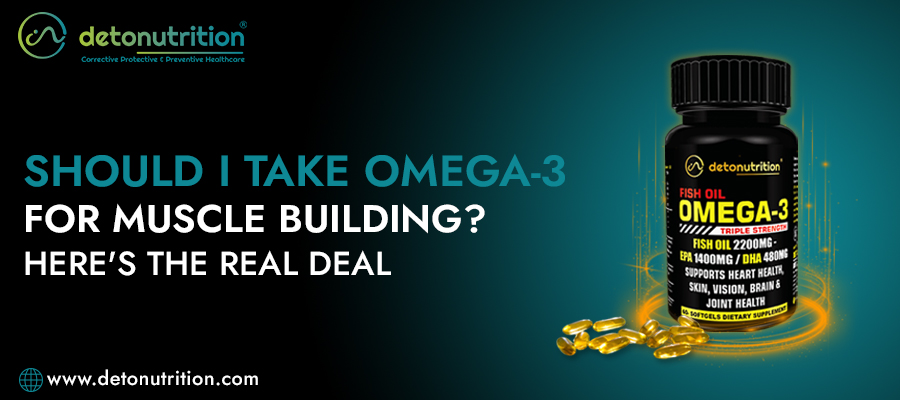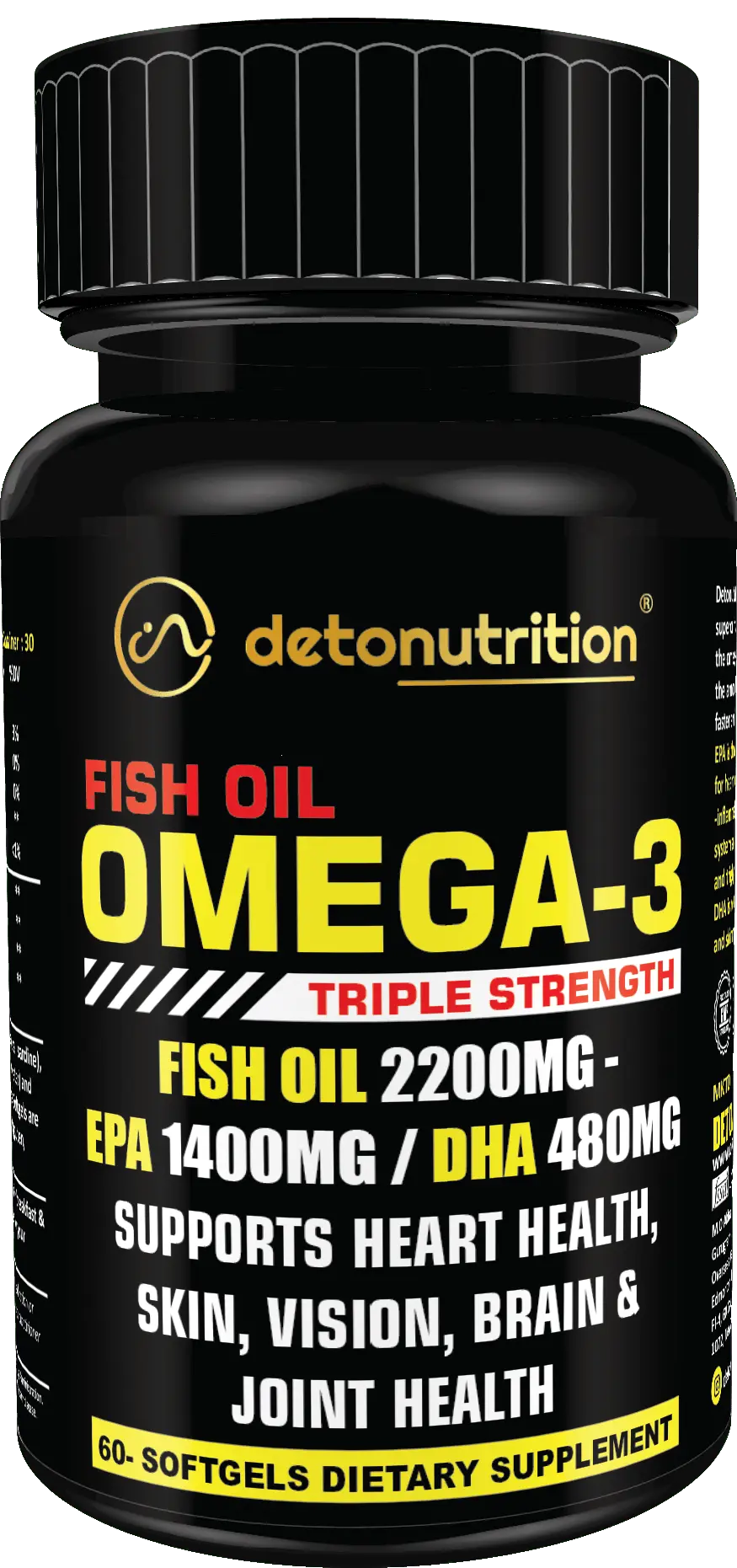Should I Take Omega-3 For Muscle Building? Here
If you’ve been hitting the gym, meal-prepping like a pro, and keeping your protein intake high—but still feel like your muscle-building results are slower than expected—you’re not alone. But good that you reached here, as your questions are about to be answered.
Most people think building muscle is all about lifting heavier weights and chugging protein shakes. And sure, those are important. But what if we told you that something as unassuming as omega-3 fatty acids could actually enhance your gains?
Yep. That little nutrient most people associate with heart health and joint support might just be your muscle-building secret weapon. Let’s break it down.
What Are Omega-3s, Really?
Omega-3 fatty acids are essential fats. But unfortunately our body can’t make them on its own and hence we need to rely on our diet or supplements.
There are three main types:
- ALA (alpha-linolenic acid) – Found in plant sources like flaxseeds and chia seeds.
- EPA (eicosapentaenoic acid) and DHA (docosahexaenoic acid) – Found primarily in fatty fish like salmon, mackerel, and sardines.
While ALA is still beneficial, EPA and DHA are where the muscle-building magic really happens. These long-chain omega-3s are more bioavailable and have direct effects on inflammation, muscle repair, and even protein synthesis.
Can Omega-3s Really Help Build Muscle?
Short answer: Yes—but let’s talk about how.
1. Supports Muscle Protein Synthesis
Studies show that EPA and DHA can actually boost the body’s ability to stimulate muscle protein synthesis—the process your body uses to repair and grow muscle after a workout. Especially when paired with resistance training and protein intake, omega-3s give your muscles the raw materials and the environment they need to grow.
2. Reduces Inflammation
Intense workouts create micro-tears in your muscles (which is how you grow, eventually), but they also trigger inflammation. While some inflammation is normal, too much can delay recovery, reduce performance, and make you feel sore longer than necessary.
Omega-3s are natural anti-inflammatories, helping your body recover faster so you can train harder, more often.
3. Improves Muscle Quality in Older Adults
Even for those not in their 20s anymore, omega-3s can play a huge role. Research shows that older adults who supplement with omega-3s see better muscle strength and function—even without changing their workout routines. That’s a big win if you're looking for sustainable gains at any age.
Best Source of Omega-3 for Muscle Gains
Alright, so now you’re convinced omega-3s matter. The next question is: What’s the best source of omega 3?
1. Fatty Fish
Not a news anymore, oily fish are the best dietary source of omega-3. Salmon, sardines, mackerel, and trout are rich in both EPA and DHA. Ideally, you’d be eating these 2–3 times per week.
But not everyone loves fish, and even if you do, life happens. Where should the vegetarians go? Enter the world of supplements.
2. Omega-3 Supplements
Fish oil capsule supplements from Detonutrition are super convenient and allow for consistent dosing. Make sure to look for a high-quality brand that provides at least 500mg–1,000mg of combined EPA and DHA per serving.
Look for:
- Third-party testing (for purity and potency)
- Triglyceride form (for better absorption)
- Low oxidation (no fishy aftertaste = higher quality)
If you’re plant-based, don’t worry—there are algae-based omega-3 supplements that contain DHA and EPA too. These are excellent alternatives and offer a clean, sustainable source of omega 3.
3. Plant Sources (Chia, Flax, Walnuts)
These provide ALA, which your body can convert to EPA and DHA—but not very efficiently. Only about 5-10% of ALA turns into EPA, and even less into DHA. So while they’re healthy, they’re not the best source of omega 3 for muscle-building goals.
How Much Omega-3 Should You Take for Muscle Building?
There’s no official “muscle-building dose,” but research suggests around 2,000–3,000mg of combined EPA and DHA per day may support muscle health, especially when combined with strength training.
Always start with the serving size on your supplement and talk to a healthcare provider if you have any conditions or take medications (like blood thinners).
When Should You Take It?
Take your omega-3 supplement daily, ideally with a meal that contains fat to enhance absorption. Some people like taking it post-workout alongside protein to maximize recovery, but again, the most important thing is that you take it regularly.
Final Thoughts: Is Omega-3 Worth It for Muscle Building?
If you’re serious about training, recovery, and building muscle—not just looking big, but staying strong and healthy long-term—then yes, omega-3s are 100% worth adding to your regimen.
They’re not magic, and cannot/should not be treated as a replacement for your training program or nutrition. But they will help reduce inflammation, improve muscle repair, and enhance your body’s ability to adapt to your workouts.
And the best part? Getting omega-3s into your routine is simple. Eat more fatty fish, or find a trusted supplement source - Detonutrition. Whether it’s wild-caught salmon or a daily softgel, find the best source of omega 3 that fits your lifestyle—and stay consistent. Your muscles will thank you.

We have a vision to take good care of your health and nutrition with products which are made from research and experience. Our team is technical as well as experienced so that we can deliver you the best products for your health and wellness.
Stay Fit, Stay Healthy And Stay Happy Always!
QUICK LINKS
CATEGORIES
Subscribe Us
Subscribe to Dr. Aaditya's Health Blog Email Newsletter
© Copyright - Detonutrition. All Right Reserved 2026.




